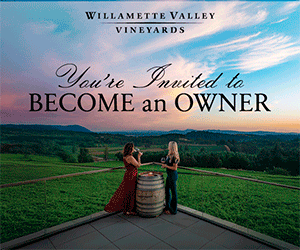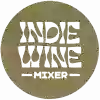Distinctive Plots
Learn why winemakers cherish specific vineyard blocks
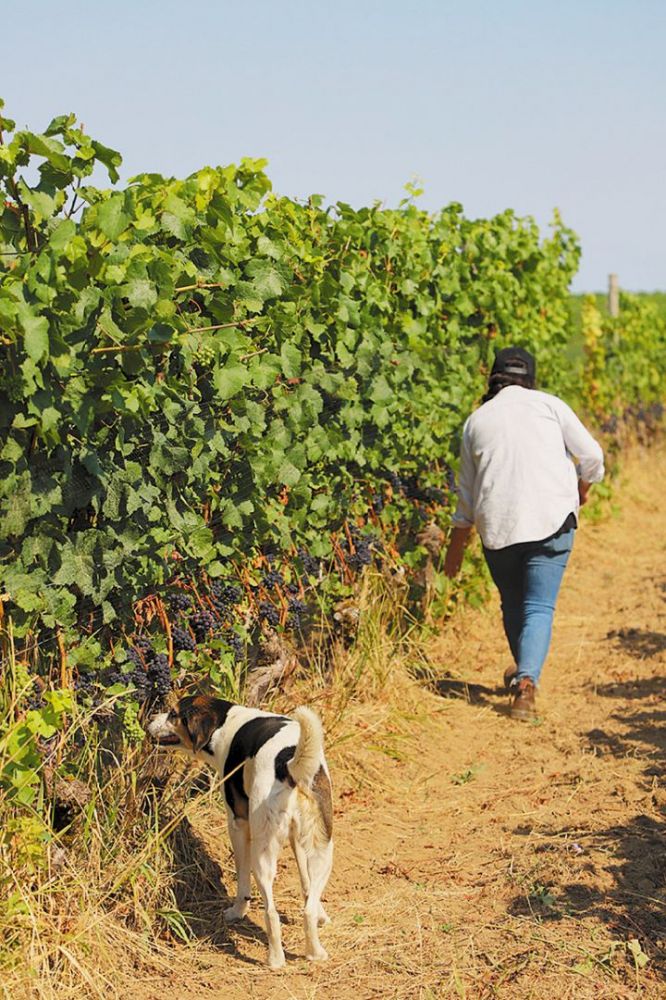
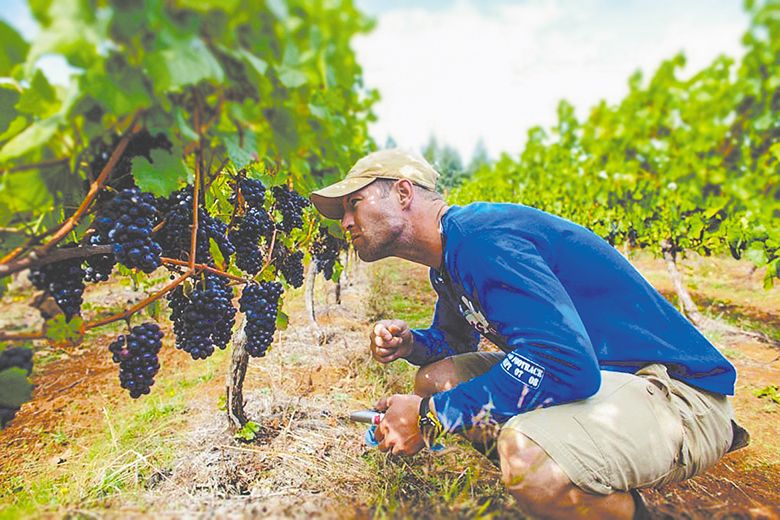
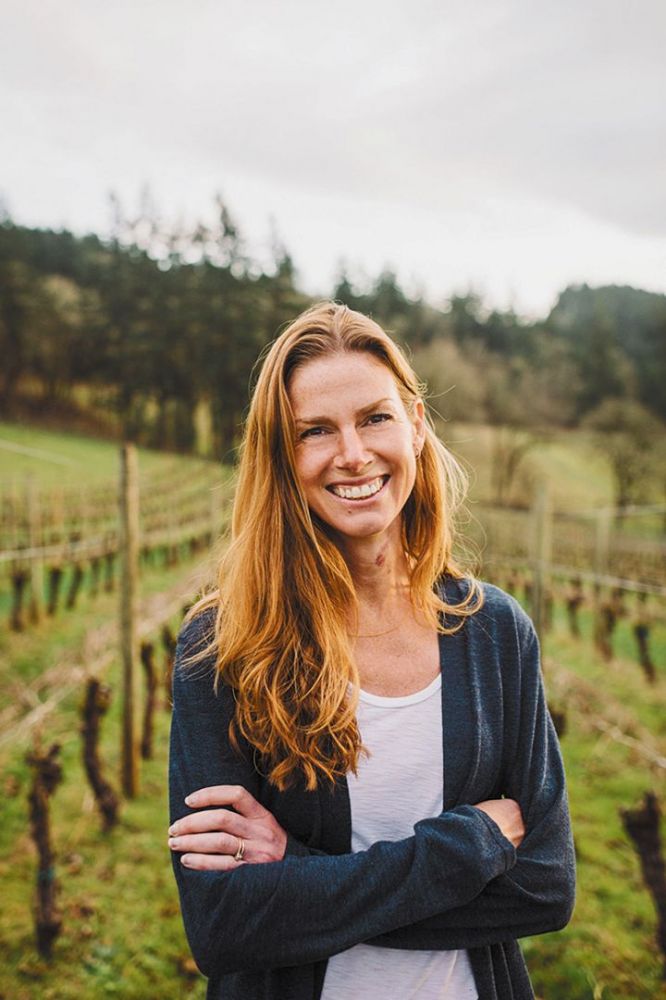
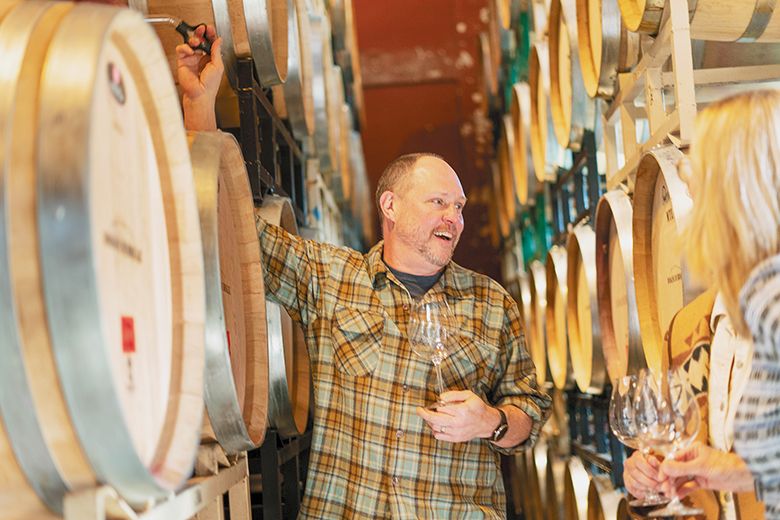
By Jessica Zimmer
Block selections refer to grapes chosen from the same row. Distinct attributes emerge reflecting specific phenomena in the plants and natural environment. Meet some of Oregon’s winemakers using the highest-quality blocks for their premium wines.
Katie Santora, winemaker for Chehalem Winery in Newberg, considers vine age an important factor in block selection. “Our older blocks show less vintage variation. They’re more consistent, offering denser, juicier flavor. They have an extra essence that comes with more complexity,” she says.
Santora finds a true affinity for the Pinot Noir rows at the peak of Corral Creek Vineyard. Grapes from there contribute an ethereal, floral quality to the wine. “At the very top of the vineyard, there’s loess soil. It’s windblown and finer than the loam at lower elevations. It’s also cooler up there. When picked early, the grapes from the Pinot Noir Pommard and Wädenswil clones retain more acid. We use this fruit to make delicate, bright, graceful wines,” she says.
She finds marked differences in the grapes grown at the hilltops in Ridgecrest Vineyard. “The clusters have thicker skin and the berries are smaller. The flavor from this fruit tends to be more concentrated,” says Santora.
Santora understands how weather affects the vines. Walking the vineyard suggests ideas for working with the fruit. “We’ll do different things with the same varietal, such as using a block in a cooler area for rosé. Sometimes we expose fruit in another block using Scott Henry trellising rather than Vertical Shoot Position.” She continues, “Many winemakers and growers share learnings and best practices with one another. The Oregon wine industry is very communal in that way.”
From the forest to Mount Hood
To the southwest, Tracy Kendall, co-owner and winemaker at Folly of Man, uses different block selections from rows at the forest’s edge. “We are seeing healthier vines and good airflow in these spots. Soil depth changes the flavor profile. When you have a row on a hillside that’s planted in soil 20 feet deeper than its neighbor, the variation can be substantial,” says Kendall.
She is still comprehending the performance of her blocks of Pinot Noir and Chardonnay, having worked with her 16-acre Eola-Amity Hills estate just two years. “It can take a handful of vintages– or more– to really understand the grapes. The weather shifts from year to year highly influence the grapes.”
Kendall tried to avoid farming protocols that “overperfect” her wines. She says, “Doing single-vineyard bottlings is a good way for me to determine what characteristics are in a vineyard. Then I can figure out how to work with the different blocks.”
Traveling northeast, Jesse Lange, winemaker and winegrower at Lange Estate Winery in the Dundee Hills studies “uber-fine” distinctions on his four farms, totaling about 100 acres. “I have data on each clone and block, every rootstock and its elevation, and the spacings between every planting. My family has been here since 1987. We’ve had 36 vintages to hone our craft,” says Lange.
He finds the key to wise block selections entails keeping each wine separate throughout the winemaking process. “If you blend the grapes or wines immediately, you lose the ability to understand each block,” he explains.
His highest-quality blocks include rows of estate Pinot Gris planted in 1988. They face Mount Hood on eastward slopes. Lange says, “We use these grapes to make our Pinot Gris Reserve. They’re opulent, with restraint and vibrancy. They have a tropical citrus perfume and a panoply of flavors. This is partly because these rows grow in Jory, our iconic volcanic soil that lends complexity to the finished wine.”
The Lange Estate Vineyard Pinot Noir stands as another splendid example of block selection. “These grapes are also grown on east-facing slopes in Jory soil, at elevations between 340 and 850 feet. They’re a blend of our three, distinct estate vineyard sites, with spice and rose petal notes. Understanding the different blocks used in this wine requires time and evaluation. It’s probably the most complex and compelling Pinot Noir wine we produce,” says Lange.
Carefully selected cuvées
David Petterson, winemaker at Domaine Lumineux, also relies on block selection from the winery’s Dundee Hills vineyard. His goal is to make distinctively different Pinot Noirs from the high-elevation site at the top of the hills. “We grow seven clones separated into different blocks. Because we planted unique clones in each area, there’s a great deal of diversity. We’re now experimenting to find the best possible vine pairing to sites. Each spring, we do barrel selection to better understand what we’re working with,” says Petterson.
Domaine Lumineux’s Cuvée Pinot Noir is comprised of different blocks throughout the vineyard. The winery’s reserve wines are chosen from areas where the grapes tend to develop more structure.
“The older blocks are more established and balanced. Take Block C Clone 777. This wine comes from one of the oldest blocks at the highest elevation. It’s intense, well-rounded and very dark, with red fruit-forward flavors. It varies from Clone 114 Pinot Noir, which is planted at a slightly lower elevation. Clone 114 tends to be spicier, with aromas of black licorice and dark blackberry fruit,” says Petterson.
Petterson considers the Pinot Noir clone 777 a “Swiss Army Knife” grape. “It possesses everything: structure, finish, aromatics and fruit. However, it’s also good to combine the blocks of this grape in the cuvée,” he says. “Doing so helps avoid unbalanced, one-dimensional wines. Knowing our blocks allows us to make complicated, classic wines with great flavor and structure.” Petterson continues, “In my opinion, each block represents its own little farm. Sometimes it works better to combine a variety of fruit to showcase the potential of the entire vineyard.”
Jessica Zimmer is a news reporter, attorney, and educator based in northern California. She has worked in journalism for over 20 years. She covers a wide variety of industries, including alcoholic beverage production, transportation, law and the arts.



